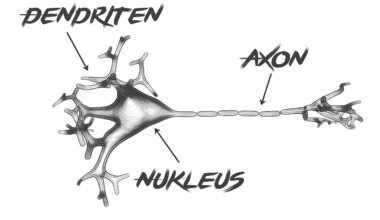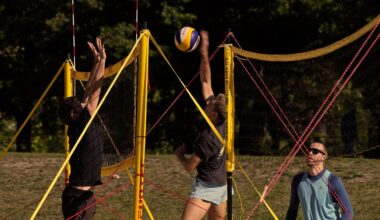Using Kettlebells for Rehabilitation of Tendonitis
Kettlebell exercises can greatly enhance the recovery process of tendonitis. Incorporating kettlebells in rehabilitation helps individuals build strength progressively without aggravating the condition. The unique design of kettlebells allows for a more comprehensive range of motion, which is essential during recovery. Select exercises that focus on the injured tendon to ensure the best results. Before starting any rehabilitation program, consult a healthcare professional to confirm this approach suits your needs. Begin with lighter weights and slow, controlled movements to avoid strain. Make sure to listen to your body; if pain arises, stop the exercise immediately. Using kettlebells also provides the added benefit of improving overall grip strength, which can compensate for weaknesses stemming from the injury. This is significant for enhancing functional abilities in daily life. Performing exercises regularly under watchful guidance can lead to improved stability and muscle balance. Emphasis should be placed on consistency rather than intensity. Gradually increasing kettlebell weights as recovery progresses can provide excellent results. Overall, with the right approach, kettlebells can be a key player in rehabilitation efforts.
When considering kettlebell exercises specifically for tendonitis, it is vital to consider variations that minimize stress on tendons.Start with foundational movements, such as basic swings, to help establish form. Include the halo exercise, which promotes shoulder mobility and stability without excessive strain. The key is to maintain a focus on technique, allowing the injured area to heal while building strength around it. Incorporate recovery practices like ice and elevation after workouts to minimize swelling. Gradually increase the complexity of movements after the initial stages of healing to reintroduce normal functional patterns. A wise strategy is to alternate kettlebell exercises with supportive rehabilitation methods, such as stretching and physiotherapy. This multidisciplinary method facilitates a more holistic recovery experience. Consistency is paramount; aim for several shorter sessions each week rather than a few long ones. Engaging in activity regularly can promote healing while fostering confidence and creating a safe environment for strength building. Kettlebell exercises must be integrated into a comprehensive rehabilitation plan, carefully monitored for progress and pain management.
As tendonitis often results from repetitive motions, kettlebell exercises can effectively counteract this by strengthening surrounding muscles. This additional strength helps stabilize the tendons, alleviating pain during movement. Exercises such as deadlifts focus on the posterior chain, truly benefiting the shoulders or knees involved in the tendonitis. Incorporating rotational movements with kettlebells can also foster balance and flexibility, allowing for improved performance in athletic tasks. Routine assessments of pain levels and functional ability are essential to tailor the program accurately. Keep records of exercises, weights used, and any discomfort experienced. This approach can help in modifying the program as necessary. Appropriate warm-ups are critical to prevent injuries during rehab; always include dynamic stretches targeting affected areas before engaging in kettlebell workouts. Recovery can also be supported through proper nutrition, hydration, and rest. Each of these components contributes significantly to the healing process. It’s essential to consult with a knowledgeable trainer who understands rehabilitation through kettlebells. Working in tandem with your rehabilitative care can amplify recovery efforts, provide motivation, and instill confidence when exercising. This teamwork leads to a successful rehabilitation outcome.
Best Kettlebell Exercises for Tendonitis Recovery
Identifying the appropriate kettlebell exercises is crucial for rehabilitating tendonitis effectively. The following movements are recommended for their low-impact nature, promoting strength without undue stress. Begin with kettlebell swings, a dynamic exercise that enhances overall body coordination and increases muscular endurance. Progress to goblet squats, focusing on proper form and controlled movements to strengthen legs. Follow up with single-arm rows with lighter weights, concentrating on body stabilization while ensuring correct form. Next, incorporate overhead presses, which can improve shoulder mobility and strength with minimal risk of aggravation. Lastly, practice kettlebell deadlifts to reinforce back and leg strength while keeping pressure off affected tendons. Maintain a low volume of repetitions initially while assessing comfort levels throughout exercises. It’s essential to consider listening to your body during rehabilitation; increase difficulty gradually. Recovery times may vary, resulting in specific adaptions when tracking individual progress. These kettlebell exercises should be included as part of a broader rehabilitation strategy addressing flexibility, stability, and overall muscle conditioning in the affected areas.
A common concern with rehabilitation is the transition back to normal activities. This process might be slow, but consistent kettlebell training helps by rebuilding strength effectively. After the initial phase, progressively increase the amount utilized in exercises. Utilize exercises for encouraging functional movements beneficial for everyday life. Additionally, consider integrating kettlebell drills that mimic sports-specific actions tailored to your lifestyle or sport. Staying motivated involves tracking progress and celebrating milestones, no matter how small. It’s crucial to also have a support system, whether trainers or rehabilitation professionals, to guide you through the recuperation journey. Peer interaction can provide both accountability and encouragement. The mindset needed during rehabilitation focuses on gradual progression rather than pushing for immediate results. Incorporating mental strategies such as visualization can enhance motivation and commitment. Regular feedback from professionals can also be pivotal in rebuilding confidence and ensuring that all movements align with recovery goals. Incorporating kettlebells isn’t about simply completing exercises; it’s about engaging in meaningful rehabilitation that addresses individual concerns for long-term success.
Safety Measures When Using Kettlebells
Safety is paramount while performing kettlebell exercises during recovery from tendonitis. Always prioritize listening to your body; be aware of reactions throughout each workout. Avoid any exercise that intensifies discomfort or pain in the affected area. Correct form should be maintained continually; any twist or strain can provoke inflammation or reinjure the area. It’s also crucial to match the kettlebell weight with personal strength levels, especially in the early stages of rehabilitation. Begin with lighter weights, gradually progressing as strength returns. Ensure an appropriate warm-up routine involving dynamic stretches before every workout to enhance circulation and prepare the body. Cooling down with static stretches post-session assists in reducing muscle tension. Always perform exercises in a safe environment, free from distractions and potential hazards. In addition, consider working with a professional trainer to provide personalized guidance on proper technique and form. Creating a consistent workout schedule can also foster responsible practice. The harmony between arms and legs significantly reduces the risks associated with kettlebell training, ensuring that rehabilitation remains safe and effective.
In conclusion, kettlebell training serves as an excellent tool for rehabilitating tendonitis. The combination of strength, functionality, and proper technique aids in creating a successful recovery program. Emphasizing consistency and progression without pain helps ensure long-lasting benefits and prepared you for rediscovering lost strength and mobility. As time progresses, you may find yourself more resilient than before the condition. Always remember that rehabilitation requires patience; listen to your body and adapt to its needs. Collaborate with healthcare professionals to craft a holistic strategy involving kettlebell exercises and other modalities. The synergy of these approaches leads to sustainable healing. Continue to refine your techniques, monitor your pain levels, and celebrate progress along the way. Be patient in your approach, as it fosters a more remarkable recovery journey. With diligence, proper understanding, and effective practices, kettlebell training can help restore function and independence. Ultimately, enjoy the journey of healing and rediscover functional abilities as you progress through your rehabilitation with kettlebells.


